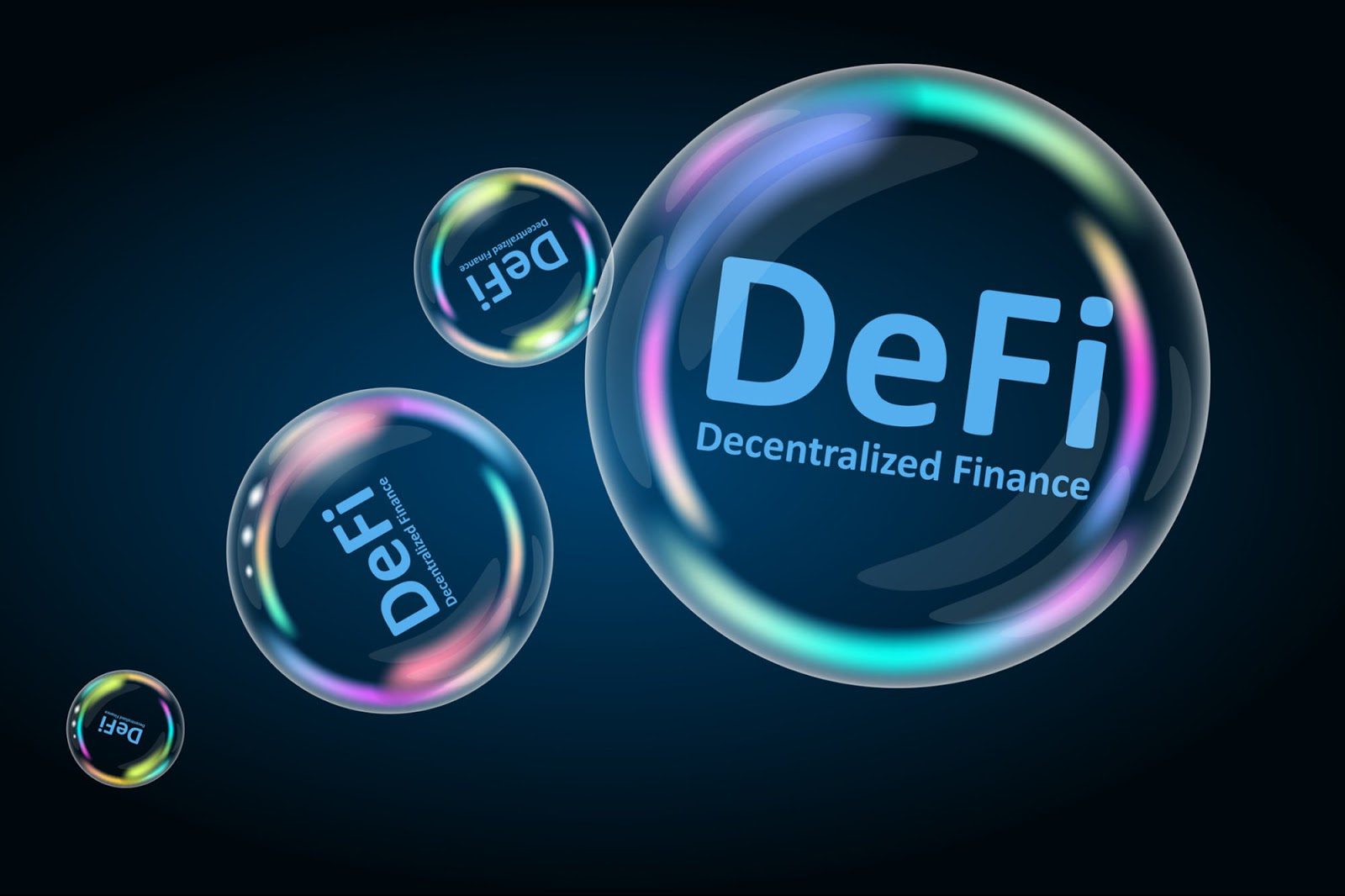To fully understand the concept of DeFi, we need to understand what CeFi or Centralized Finance means. Centralized Finance is a financial service that operates using one central source or exchange to control all financial orders or financial instruments.
Traditional banks and financial institutions operate under the principle of centralized finance. Similarly, the principles guiding centralized finance also apply in the crypto-finance space. However, with the development of Decentralized Finance, there has been an increase in its adoption. You may then ask what is Decentralized Finance? How does DeFi work? What are its applications?
DeFi is an abbreviation for decentralized finance. The main objective of decentralized finance is to create decentralized versions of traditional transactions by cutting out intermediaries or middle-men. Unlike centralized finance, DeFi offers more transparency and easier access to financial tools in the crypto-financial space. Financial instruments include loans, savings, and insurance. The adoption of DeFi has seen an increase in DeFi lendings. For example, many crypto platforms now connect lenders who offer Bitcoin loans to borrowers following decentralized finance principles.
Compared to other traditional financial instruments that are centralized, DeFi is a global decentralized alternative that gives its users complete control over their digital assets. In terms of cryptocurrencies and financial instruments, DeFi has numerous applications, and there are already a host of projects which incorporate decentralized finance. Some of these projects include Aave, MakerDao, Kyber, Compound, and Ox.
The applications of DeFi are endless, and it offers a host of financial services just like centralized finance just without the intermediary. Most project that incorporates DeFi follows the example of Ethereum. Ethereum is the second most valuable crypto asset behind Bitcoin. The Ethereum project is very different from Bitcoin because it offers a host of other services apart from providing an easy and fast payment platform for its users. One unique service Ethereum offers is Smart Contracts.
According to Investopedia “A smart contract is a self-executing contract with the terms of the agreement between buyer and seller is directly written into lines of code. The code and the agreements contained therein exist across a distributed, decentralized blockchain network. The code controls the execution, and transactions are trackable and irreversible.”
Based on the principles of DeFi, a smart contract will automatically execute a transaction once the terms and conditions of the agreement are met. Unlike traditional financial institutions, smart contracts provide more flexibility and speed in the execution of different transactions. The ethereum project offers programming languages like Solidity, which are used for creating and executing smart contracts.
Leveraging smart contracts, a wide range of decentralized finance applications operate under the ethereum platform. Some of these applications include:
- Decentralized exchanges (DEXs)
- Stable coins
- Lending platforms
- Prediction Markets
Decentralized Exchanges (DEXs)
Decentralized exchanges are online exchange platforms that allow users to exchange one currency for another. Decentralized exchanges provide platforms that directly connect sellers and buyers without intermediaries or middle-men executing the transactions. You can find the rankings of the best-decentralized exchanges at Coinmarketcap.com.
Stable Coins
Stable coins are a byproduct of decentralized finance. Due to the volatile nature of cryptocurrencies and their high fluctuations in price, stable coins were born. Stable coins are cryptocurrencies that are pegged to non-crypto currencies like fiat currency.
Stable coins are not volatile or prone to high fluctuations and are pegged to non-crypto currencies to keep their prices stable. Some example of stable coins includes Dai, Tether, Busd, Pax. All of these crypto-assets are tied to the United States Dollar (USD).
Lending Platforms
Another application of decentralized finance is crypto lending. Eliminating the middle-man, DeFi connects crypto lenders to borrowers. There are a host of crypto platforms that facilitate crypto lending between lenders and borrowers. One such platform is Compound. This crypto platform allows its users to borrow loans and also offer loans to others. The interest rates are set algorithmically, meaning that an increase in the demand for crypto loans increases the value of the interest rates attached to the loan.
Users seeking to use the DeFi lending feature must be ready to provide collateral to secure their loans. The collateral for a crypto loan is often paid in Ether, the crypto asset for the Ethereum project. One of the benefits of crypto lending is that borrowers don’t need to provide their identity or provide information about their credit score. However, borrowers must meet the smart contract’s terms and conditions before their transaction can be executed.
Prediction Markets
Another application of DeFi is the prediction markets. This feature offers users betting options on the possible outcome of future events. Like every other application of DeFi, this feature does not allow for intermediaries or middle-men but performs the same functions as every other prediction market.
Due to the unique nature of decentralized finance, a host of new ideas have sprung up around DeFi. They include concepts like:
Yield Farming
This idea offers investors the chance to make investments in different DeFi tokens. For knowledgeable traders, yield farming can provide a steady stream of income by investing in the right tokens. For an in-depth review on Yield Farming, check Coindesk.com.
Liquidity Mining
This feature is used to lure users to a cryptocurrency platform by rewarding them with free tokens. Liquidity Mining offers users free tokens simply for joining a cryptocurrency platform. Other concepts include Composability and Money Legos.


































